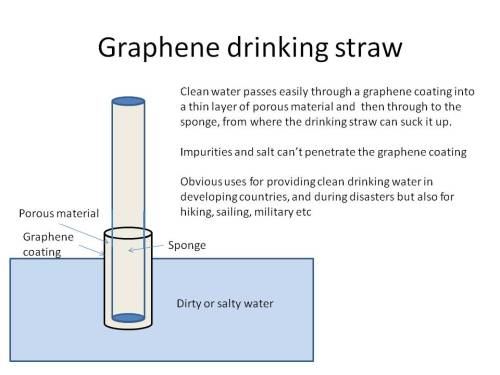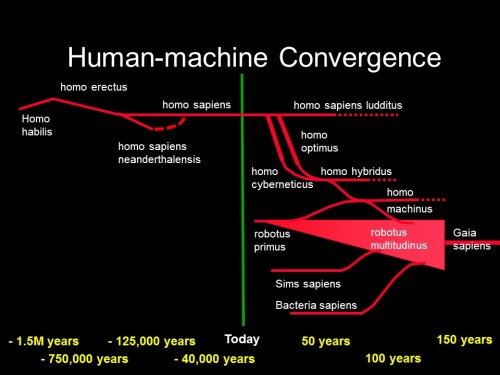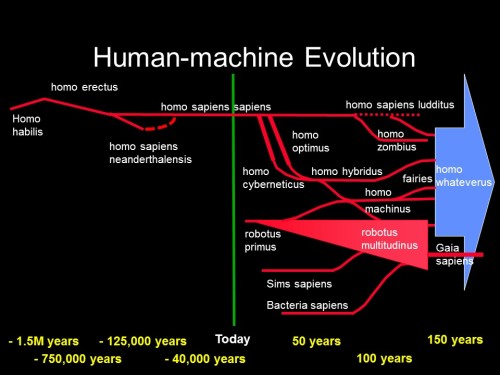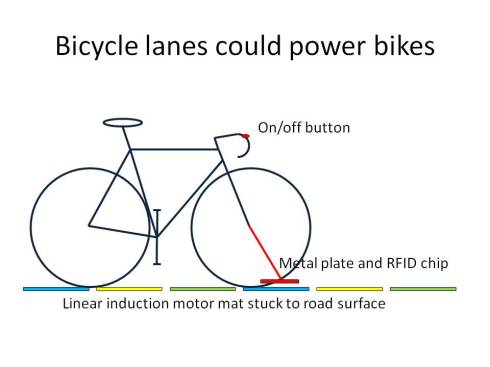This post was co-authored with Bronwyn Williams (details below)
I recently watched a documentary about the 1978 Jonestown Massacre, where 918 Peoples Temple followers died, many of them children, killed by their own parents. Before it even started, my own memories of it in the news made me realize that the current global socio-political climate makes such an ‘unthinkable’ event likely to happen again, possibly on a much bigger scale, perhaps even in several places at once.
The biggest factor by far is the global replacement of religion (mostly Christianity) by secular religion substitutes. These secular substitutes for the meaning, direction and purpose formerly provided by religion take many forms, from a revived interest in paganism, witchcraft, and general “no name brand” spiritualism and mysticism, through to a new almost religious fervor for political causes. Now, while finding solace for the horror of the human condition in crystals or astrology is relatively benign (unless you are getting into debt betting your children’s school fees on the stocks recommended in your daily horoscope app, for example); mass movements driven by tribes of True Believers, are far more concerning.
New converts to any mass movement – religious or secular – are invariably among the most passionate believers, so we now have a massive and global pool of people newly susceptible to the same forces that enabled Jim Jones to do what he did. Every day on social media we witness first hand that enthusiasm, driving the secular equivalent of the Spanish Inquisition and targeting anyone and everyone not devoutly following every detail of their new faith. Jones strongly policed his followers and strictly punished any rule breaking or heresy. That same practice is greatly amplified in social media, to billions of people instead of the thousand followers Jones had influence on.
I’ve written many times about the strong similarities between religion and belief in catastrophic climate change, environmentalism, woke doctrine, veganism, New Ageism, and others. All these triggers tap in to the same anchors in human nature, first of which makes people want to believe they are ‘good people’ on the right side of history; the second of which is tribalism, the basic human instinct of wanting to belong to a group of like-thinking people, while clearly marking the boundaries between ‘us’ and ‘them’. At the same time, as people are forced to decide which side to stand on, the gulf between the “us” and ‘them’ is always widening, amplifying both the fear of – and the real consequences of – being cut out of the circle of trust of their chosen tribe, just as Jim Jones did.
Importantly, the scientific truth and proven facts behind these causes are less important than how the causes make the new true believers feel; particularly when it comes to signalling the moral superiority of the in group compared to the infidel, unconverted out-group. As Eric Hoffer wrote in The True Believer, for the adherents of most mass movements, “The effectiveness of a doctrine should not be judged by its profundity, sublimity or the validity of the truths it embodies, but by how thoroughly it insulates the individual from his self and the world as it is.”.
Now, these tribal drivers are immensely strong forces, the likes of which have underpinned crusades and wars since the days of ancient civilizations. Now that far fewer people believe in formal religions, many of those who previously would have been enthusiastic believers have turned instead to these secular substitutes that push the same psychological buttons. Another documentary this week on veganism shows exactly the same forces at play being harnessed as in religion – secular equivalent to sin, shaming sinners, fear of rejection, tribalism, and especially demonstrating the impact of a charismatic ‘priest’. Jones was highly charismatic, and a master at using these forces. Compare the influence today that a single person can have in pushing a particular agenda in the name of social justice or climate change action.
Fear was a very powerful weapon used constantly by Jones, and today’s climate catastrophists do all they can to ensure as many other people share their fear as possible. It seems that every negative news item is somehow tied to ‘climate change’. If the climate isn’t enough, rising seas, ocean acidification, plastic pollution are all linked in to enhance the total fear, exaggerating wildly while a scared media lets them get away with it. Millions of people now pressurize governments and social media, screaming and shrieking “DO SOMETHING, NOW!!!!!”. Jones enhanced fear by talking frequently about death, even using mock suicides to amplify the general climate of fear. Now, witness the frequent death cult demonstrations of animal rights protesters and climate change catastrophists. Extinction rebellion excel in this area, with their blood-red meta-religious uniforms. It is impossible not to see parallels with Jones’ cult followers.
Jones was also adept in creating fake news. He used fake healings and even a fake resurrection to amplify faith and ensure his reign as leader. Fake news in today’s work is virtually indistinguishable from reality, and worse still many people don’t care, as long as it backs up what they already believe.
Another strong parallel is socialism. Jones gift-wrapped his cult in socialism Utopianism. Most people won’t join a movement just from fear alone, there needs to be a strong attractor to get them to join up, and fear can keep them there afterwards. Today we see a new enthusiasm among young people (a gospel enthusiastically spread to young minds via their state school teachers) for socialism. Via skillful use of Orwell’s doublespeak, with activists redefining words over a decade or more, they are presented with all the wonderful Utopian claims of ‘fairness’, ‘equality’, ‘love’, ‘tolerance’ and so on, while non-believers are listed as ‘evil’, ‘deplorable’, ‘fascists’, and ‘deniers’. Even the USA is seeing strong enthusiasm for socialism and even communism, something that would have been impossible to imagine just 25 years ago.
Socialism, environmental catastrophism and religious fervor make a powerful trio. Promised salvation, status and utopia if you follow, doom and catastrophic punishment such as social ostracizing and career destruction on the light end, and complete civilizational and environmental collapse if you don’t.
Other forces still add to this. Generations raised on social media and social credit scores (both official and unofficial) are rewarded (in status and income) for narcissism and self-censorship and reversion to the group mean. This, of course, further reinforces echo-chamber group-think and a sincere, yet unfounded superiority complex, creating a tribal inter-generational hostility to older people that prevents them from accepting accumulated wisdom. They happily absorb emotional fake news and distortion as long as it massages their need for affirmation. Likes outweigh facts any day. Indeed, even holding a PhD is no longer an effective immunization against collective delusion, in a world where social scientists are punished with their careers for publishing results of scientific studies that falsify popular politically correct consensus opinions (As Eric Hoffer said, “There is an illiterate air about the most literate true believer.”)
Self-hate is another powerful trend; the dishonor of being born Western (or even more damningly, male) has strong Biblical parallels to man being born into sin; and the need to recognize, confess and atone for the sins of one’s birth and forefathers.
So where does this take us?
Jones was highly charismatic. He was a natural master of using strong emotional forces built into human nature. History has many examples of equally charismatic leaders (from Obama to Oprah), who used their charm and power for good. (Unfortunately, history also provides us with myriad of converse examples, from Hitler and Stalin to Jones). It likely that we will now see new leaders emerge to galvanize today’s new tribes of true believers. Whether the new leaders exploit the passion of the masses for good or ill; or march them to the Promised Land or into a catastrophic Great Leap forward into famine, disaster and mass death, only time will tell.
Already, we have heard many activists talk about how we need to greatly reduce human population. As an example, just days ago, The Guardian published this article. The radical vegan anti-natalist movement, advocating for the extinction of the human race as the only way to save planet Earth is growing in popularity around the (mostly Western) self-hating world. Some activists have even suggested mass-killing climate change deniers.
Similarly, controversially, there is a related emerging enthusiasm for abortion. Far beyond a woman’s right to choice and autonomy over her own body, the new celebration of abortion – not as a woman’s right, but as something actively encouraged and applauded by extreme environmentalists- marks a distinct turning point in society’s values towards human life in general. Would-have-been parents claim they are so sure about climate doom that they can’t bear to bring a child into this world; similarly, young men are getting vasectomies as a sign of commitment to their cause (not unlike religious circumcision). It’s voluntary sterilization as virtue signalling, as a political message, sacrificing a child to make a point. Abortion rates may well start to rise again after a long steady decline as Climatism makes its mark.
(Indeed, the anti-fertility campaigns of Western aid and health workers in low income African and Asian countries is symptomatic of how human life is increasingly perceived as a form of pestilence, to be minimized, if not eradicated (by its own kind if necessary); rather than something intrinsically valuable.)
Following along these lines, we can see echoes of Jonestown. At the end, Jones made sure that adults gave poison to their kids first before taking it themselves. He knew that if parents had deliberately killed their kids, they would be much more likely to kill themselves.
Imagine therefore that a new charismatic leader were to spring up, adept at social media and in manipulating language, emotions, and people. Imagine that they were to gain a large following across the English-speaking world. That they advocate reducing human population, targeting heretic ‘climate change deniers’, reducing carbon footprint via vegetarianism, veganism, giving reparations to developing countries for climate damage, supporting no-borders to allow anyone to immigrate as a ‘climate refugee’, encouraging abortion to reduce birth rate. Such a package would find a very large audience who demonstrably want to feel holy, that they are good while others are evil. A charismatic leader could thereby create a strong tribe. Using abundant funding from the membership, they might well build socialist Utopian towns. Maybe in a jungle like Jones, but just as likely out in the wilds in Canada, the USA, or Australia, a Scottish island, or all of these. Perhaps they could have hundreds of thousands of people join, with millions more online ‘associates’. Millions compared to Jonestown’s thousand.
And then perhaps, in the end, to force the rest of humanity to listen by means of a coordinated mass suicide, to go down in history as martyrs to the environment, saviors of the Earth.
Is an anti-civilizational suicide pact inevitable? No, not at all.
But imaginable, feasible, perhaps even likely? In my opinion, yes it is. And it could well happen in the next few years, while this perfect storm of forces is peaking.
About Bronwyn Williams
Bronwyn Williams is a futurist, economist and trend analyst, who consults to business and government leaders on how to understand the world we live in today and change the world’s trajectory for tomorrow. She is also a regular media commentator on African socio-economic affairs. For more, visit http://whatthefuturenow.com

 I don’t do investment advice much, and I am NOT an investment adviser of any kind, just a futurist doing some simple reasoning.
I don’t do investment advice much, and I am NOT an investment adviser of any kind, just a futurist doing some simple reasoning.


























 All of these problems could be addressed in part by deploying carbon reefs, made up mainly of plastic refuse. Instead of making concrete blocks to prevent erosion, and bearing in mind the enormous amount of CO2 generated during concrete manufacture, the large plastic bales made at recycling plants could be used instead. If these were dumped into the sea at erosion sites, they would protect just as well as concrete, but would also serve to dispose of low grade plastic waste, locking the carbon up for a long time. The waste could be blended with other sorts of waste too, designing the bales in such a way that pollution is minimised, but density is kept high enough for the bales not to be washed away. If organic waste is heat treated and carbonised, gas can be extracted during this process that could be used for energy production. The carbonised waste would act to absorb pollutants from the seawater, making a positive contribution to seawater quality. This would make beaches more pleasant for swimmers and also create a healthy environment on which corals and other sea creatures could make a home. In short, a plastic/carbon reef would result. Over time, this could be left as a reef or further dumping could result in reclaimed land. Ironically, although this idea could help the environment significantly, it would be illegal under current environmental protection legislation, which forbids dumping plastic in the sea. (Since I wrote this, Len Rosen @lenrosen4 informs me that this is not true, see his comment for details, thanks Len). Perhaps it could be circumvented by arguing that it is not dumping, but it isn’t obvious what line of distinction would be used. Environmentalists are once again shown to be enemies of the environment they claim to want to protect. Sad, very sad.
All of these problems could be addressed in part by deploying carbon reefs, made up mainly of plastic refuse. Instead of making concrete blocks to prevent erosion, and bearing in mind the enormous amount of CO2 generated during concrete manufacture, the large plastic bales made at recycling plants could be used instead. If these were dumped into the sea at erosion sites, they would protect just as well as concrete, but would also serve to dispose of low grade plastic waste, locking the carbon up for a long time. The waste could be blended with other sorts of waste too, designing the bales in such a way that pollution is minimised, but density is kept high enough for the bales not to be washed away. If organic waste is heat treated and carbonised, gas can be extracted during this process that could be used for energy production. The carbonised waste would act to absorb pollutants from the seawater, making a positive contribution to seawater quality. This would make beaches more pleasant for swimmers and also create a healthy environment on which corals and other sea creatures could make a home. In short, a plastic/carbon reef would result. Over time, this could be left as a reef or further dumping could result in reclaimed land. Ironically, although this idea could help the environment significantly, it would be illegal under current environmental protection legislation, which forbids dumping plastic in the sea. (Since I wrote this, Len Rosen @lenrosen4 informs me that this is not true, see his comment for details, thanks Len). Perhaps it could be circumvented by arguing that it is not dumping, but it isn’t obvious what line of distinction would be used. Environmentalists are once again shown to be enemies of the environment they claim to want to protect. Sad, very sad.







